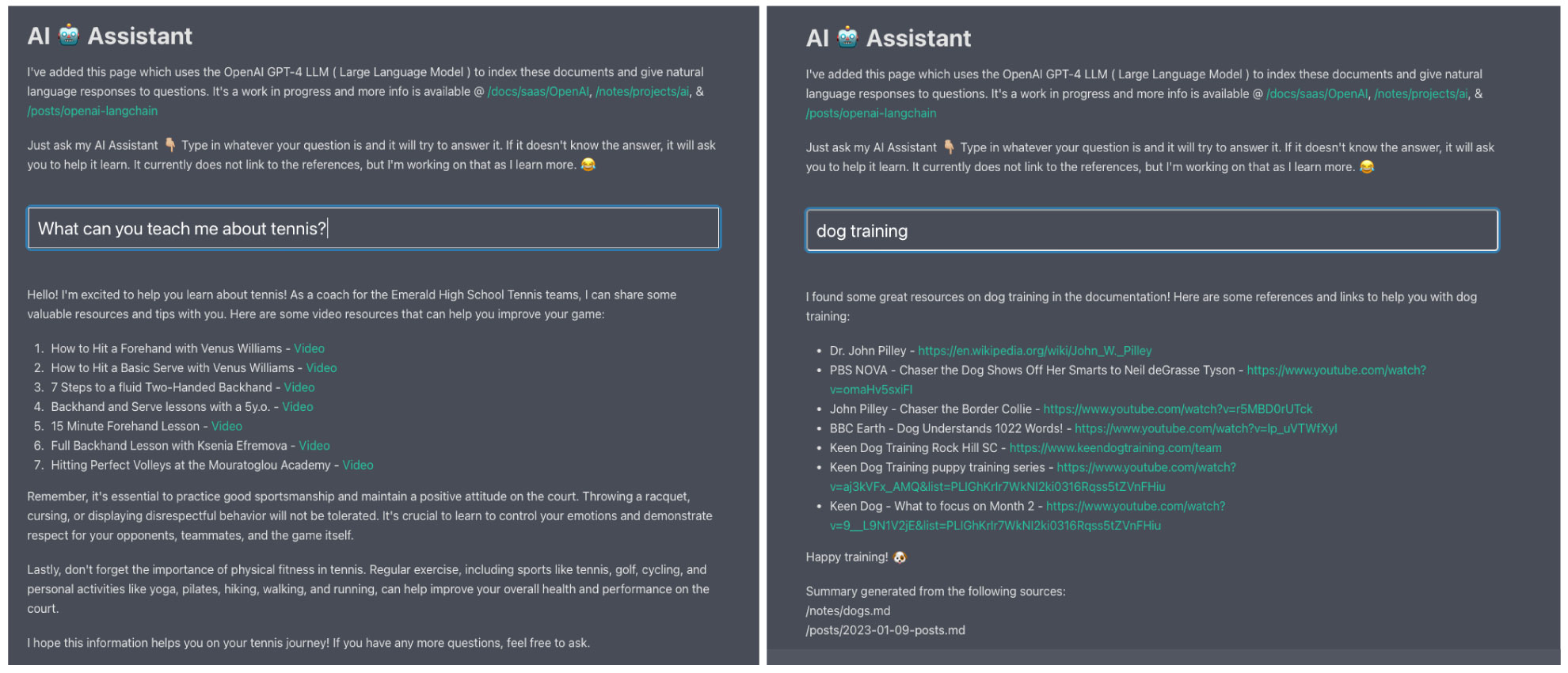Artificial Intelligence ( Part 3 )
I’ve been doing the deep dive on Artificial Intelligence and I’ve already written several essays1,2. It started with an essay entitled A Second Brain3 about personal knowledge bases. I started taking some online courses to help and asking questions to those much more informed. And what I’ve learned thus far is that I have a LOT more to learn. I’m still a bit fuzzy on vector dimensions, weights, how neural networks are built, and why linear regressions are used in machine learning. I don’t really want to delve into any of the technical here mostly because I don’t completely understand them, but I would like to add to my essays on AI.
I’ve found that I really learn best with hands-on experience in reverse engineering. About a week ago I started learning how to integrate LangChain into OpenAI’s GPT-44. I published a simple demo forked from another project that uses a tool to extract info from a pdf into a vector database. I’ve since started using and testing other large langugage models. And I’ve gotten up to speed on a development environment supporting running various transformers and models locally.
This morning I published a personal AI Assistant @ https://davidawindham.com/til/ai/5 which has access to all of the documents in my ‘Today I Learned’ repo. It wasn’t very technically difficult given that the code to ingest the repo was already written and I’m just using the OpenAI API for the language model. Although there will be a ton of service as software offerings for doing so, I’m now on to the more difficult task of learning to customize the vector databases and weight-train the models.

I’ve had a lot of discussions about AI recently and I started off, as I usually do, rather unimpressed. The second essay I wrote changed my mind and now I’m on to how can it be applied. Larger clients may have the need to apply semantic search and answer sort of applications using AI, but the majority of my work still revolves around supporting mostly small-scale clients’ who could benefit most by using it internally to train new staff or maintain documentation. The 20 to 30 two-way interactions I have on a daily basis generally revolve around support or service questions via email which could be serviced by AI, but I’m still mostly focused on using it as a personal second brain. Perhaps I’ll try training a model on my emails and text messages for fun.

“Garbage In, Garbage Out” is a term colloquially used to describe that nonsense input data will produce nonsense output. I regularly use the expression for both technical and non-technical explanations. My wife sent me the screenshot today on the right of my AI bot responding before we met for lunch:
It reminded me of the importance of the organization and quality of the source documents. I don’t want an AI to do everything. I just want it to do some things very accurately. Perhaps I’ll go in and improve my list of favorite foods at some point to improve that result. Here are some results that are a bit better organized.
I think this is going to be the issue moving forward with various AI platforms and tools. It won’t matter that your spreadsheet can give you a natural language response to the thousands of rows of sales data because that data isn’t entirely accurate or organized. It’s what folks are now finding out now about the sources of ‘Artificial Intelligence’. My sometimes incoherent rambling on this website is in the dataset powering some models. I think there will be a huge number of professional use case scenarios. I’m certainly not gloomy in my outlook, but considering the amount of misinformation that folks seem eager to swallow up and share, it’s just going to make it even more confusing.
Five years from now, it’ll just be part of everyday life. My fridge will take a photograph of its contents, use AI to determine what they are, use AI to compare it against the previous stock, and use AI to message me a shopping list using natural language. If I haven’t updated my favorite foods or grocery lists by then, it’ll only be suggesting pickles, vinegar, and okra. The more I wrap my head around it, this scene from the film Her6 seems to be not only completely plausible, but somewhat likely.
- Artificial Intelligence – https://davidawindham.com/artificial-intelligence/
- Artificial Intelligence ( Part 2 ) – https://davidawindham.com/artificial-intelligence-2/
- A Second Brain – https://davidawindham.com/a-second-brain/
- LangChain & OpenAI – https://davidawindham.com/til/posts/openai-langchain
- Today I Learned: AI – https://davidawindham.com/til/ai/
- Her – https://en.wikipedia.org/wiki/Her_(film)
